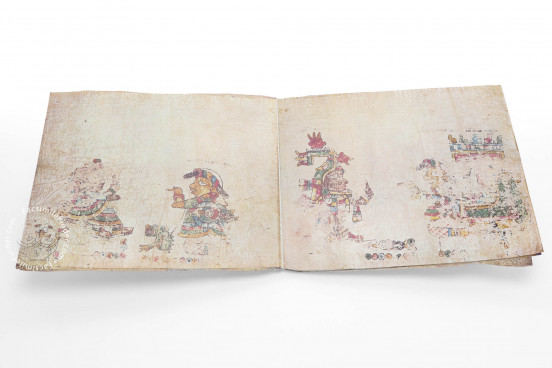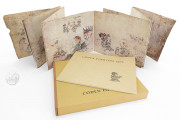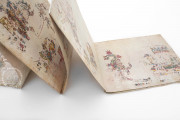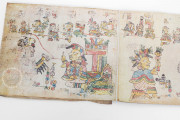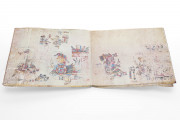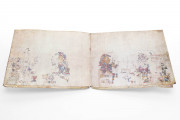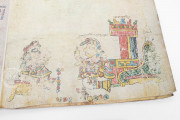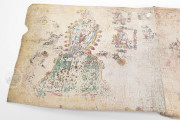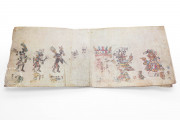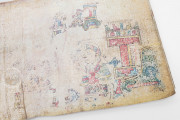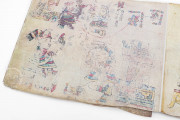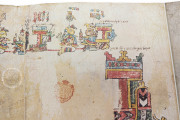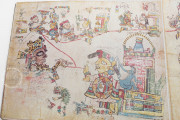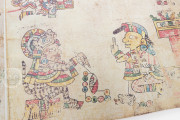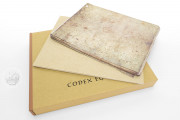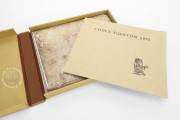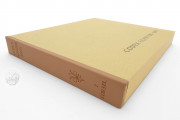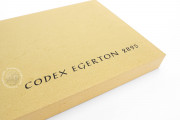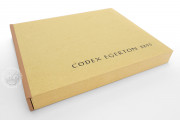The Codex Waecker-Götter—also known as the Codex Egerton 2895 and the Codex Sánchez Solís—is a Mixtec manuscript perhaps from Acatlán dating from the sixteenth century. It is a screenfold, the traditional format for books of Mesoamerica. It is composed of sixteen panels of leather with a thin layer of plaster on both sides. Polychrome pictographs covering twenty-nine of its thirty-two pages narrate the history of a Mixtec noble family comprising a genealogy of twenty-six generations with a few subsidiary genealogies.
The pictographic chronicle is enhanced by a gloss in Mixtec added probably in the seventeenth and eighteenth centuries. The screenfold extends to 441 cm when unfolded.
Chronicling Twenty-Six Generations
Read from left to right, the generations are chronicled in the Codex Waecker-Götter following conventional pre-Columbian iconography for genealogies. It opens with three pages of deities, emphasizing the descent of worldly rulers from supernaturals. There follow generations of royal couples, with each cacique (chieftain) accompanied by his wife. Each ruler is shown seated on a throne and wearing an elaborate headdress. His wife is customarily shown kneeling.
Pictographs identify the protagonists and the cacicazgo (city-state). One place (on p. 20) is identified as "jewel-town," the Mixtec name of Acatlán, from which the manuscript may originate. Transcriptions of the names of the protagonists and places in Mixtec written in the Latin alphabet have been added on several pages.
Pictographs in the Mesoamerican Palette
The bold color palette of Waecker-Götter is typical of the color scheme seen throughout Mesoamerican manuscripts. Opaque black lines were used to outline people and objects, the forms filled with reds, blues, ocher, and green. Although the manuscript has suffered some damage, and one couple seems to have been deliberately effaced, the original colors are preserved well enough to create an appealing decorative effect.
Traceable Provenance Begins in 1869
The manuscript may have been commissioned by a Mixtec patrician family to settle a legal dispute and could have remained in the family for several generations. In 1869, it was in the collection of Mexican politician and educator Felipe Sánchez Solís (1816-1882). It was subsequently acquired by Ludwig, Freiherr von Waecker-Götter (1833-1908), a German diplomat to Mexico. Acquisition accounts of the British Museum record that in November 1911 it was purchased from Ida Bühle using funds from the bequest of Francis Henry Egerton, Earl of Bridgewater.
We have 1 facsimile edition of the manuscript "Codex Waecker-Götter": Codex Egerton 2895 (Codex Waecker Götter) facsimile edition, published by Akademische Druck- u. Verlagsanstalt (ADEVA), 1965
Request Info / Price
